Follow along with the video below to see how to install our site as a web app on your home screen.
Note: This feature may not be available in some browsers.

Hi,
Use a scope to check the signals into the gate driver.
Klaus
Did you ever check the waveforms generated by your control circuit in a simulation or measurement? As previously mentioned, the circuit looks completely wrong to me. I fear a basic misunderstanding of required inverter switching pattern.
I would expect each half bridge switching according a sine pwm waveform as shown below (pwm frequency not to scale). High and low side switch are actived alternatingly with some deadtime.
View attachment 151955
To achieve maximum output voltage with 3x120° output, a "zero sequence" signal need to be superimposed, see the discussion in a previous thread.
https://www.edaboard.com/showthread...-3-phase-VFD&p=1617141&viewfull=1#post1617141
The control signals can be generated purely digitally by a slightly more powerful processor, e.g. dsPIC or ARM with respective PWM block.
Is your power supply 560VDC? (That is the peak for a nominal 400VAC waveform.) What voltage does your control circuit apply to the gates?
Perhaps you have Pmos/PNP in your half-bridge? Then to turn off a Pmos/PNP you must apply the same volt level at its gate, as the voltage at its more positive terminal.
To turn it on you might not be safe to pull the gate to 0V. The insulated gate might not tolerate such large voltage differential.
The H-bridge circuit in my simulation (post #8) is formed by two op amps. I used them as 'cheats' to make it easy for me. However it's a good idea to make a simulation with 6 op amps connected to apply waveforms to a 3-phase motor. I suppose the half-bridges contact each other, so there's a chance one of them creates a short circuit with another at overlapping times in the cycle.
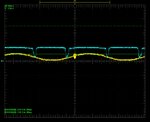
I check the signals into the LM358 comparators - positive inputs and coresponding output.
CH1 POSITIVE INPUT -> CH2 OUTPUT
...
The output waveform is correct ?
hi,
a comparator's output should be digital, either high or low.
I don't even know which color is which signal.
The one is not digital, the other doesn't go low...
The one frequency is twice the frequency of the other...
And both are noisy..
I'm really curious about the solution to your riddle.
Klaus
I don´t agree.If we buy everything as we develop ourselves? How about the passion for electronics? I think it's far more beneficial if I solve this problem here - I think many of our children will have a lot to learn. So the benefit would be millions of times bigger than if I bought a VFD.
I can't relate the output waveform to the previously posted "control circuit". It looks like a window comparator output signal, which suggests that the real circuit is different from the posted schematic.
Hi,
I don´t agree.
You try to re-invent the wheel .. but without knowing about the opreration principle.
Many others have done motor control before. Thus there is a lot of documentiation how this works.
* Please first learn the theory,
* then draw some overview, show signal flow charts and timing diagrams of what you expect (hand drawn is fine).
(I can´t see what how your circuit should work. Neither from the schematic, nor from your description)
* Then start to build the hardware.
* then verify the signals - step by step - with your expected values.
That´s the way we professionals need to go - to get good results. So why not you, too?
****
Just explain:
To me it seems you generate PWM with using DDS. Then you generate analog signals. Then you generate PWM signals again...
Thus: Digital --> analog --> digital.
Why not directly use the DDS PWM? (Without analog)
****
Your signals (scope) seem to be very noisy and don´t have the correct voltage levels.
It looks like you try to use a breadboard to desgin a switched power application.
If so, you should have learned from other threads here, that this often is just a waste of time.
--> a breadboard is not suitable for this application.
Kaus
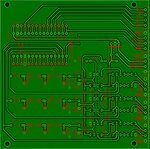
 ,
,  ,
, 
One is a comparator, the other is an OPAMP. The both (sadly) use the same schematic symbol,For example I changed LM339 with LM358
Hi,
One is a comparator, the other is an OPAMP. The both (sadly) use the same schematic symbol,
* but the OPAMP is designed for low differential input voltages and analog output
* but the COMPARATOR is designed for high differential input voltages and digital output
There are many other differences.
When you replace parts, then you should know why and how to replace them. The ouput signal will differ a lot. In timing in function and in signal levels. .... this is what I mean with "learning the theory first"
***
Your PCB is single layer without GND plane. Expect EMI/EMC problems and increased noise. A copper pour is no solid, low impedance GND plane.
The reference design uses 2 layers with GND plane. --> If you modify this, you should know why and how and waht are the risks.
***
The wiring is a mess. This is not how a "switching power" application needs to be wired. You need to take care about wire lengths, ground bounce, return paths.
Ground bounce is caused by high currents, high dI/dt, signal loop impedance...
***
Scope:
This is the smallest problem.
***
My recommendation: Read application notes from reliable sources. Many semiconductor manufacturers (IGBT, MOSFET, gate driver IC...) provide such documents.
They are for free, so use them. They provide this documents because they see the need for it. Even experienced electronics designers should read them when they enter the new filed of "power electronics". There´s a good reason for it.
*****
I see a lot of mistakes. No wonder the result is not what you expect.
Believe me, I would be gald if I coud tell you: "modify the value of resistor X and everything will work". But this isn´t the case.
Designing a 6kW VFD isn´t simple. It is complex. It is complex from the theory and from the hardware design. There are so much pitfalls...
Klaus

No. You have copper pour - this is far away from the GND plane of the reference design.My pcb is single layer but have ground plane
Me too.I wonder if the author has ever run it with a real motor.
Hi,
No. You have copper pour - this is far away from the GND plane of the reference design.
Mind:
You are not designing a DC application. A trace is not only DC resistance anymore it becomes a complex imedance.
You are not the first one trying to design a VFD (or any other swithicng power application) and you are not the first one making mistakes. Thus there arey many threads discussing the same.
A forum is meant that you gain from former discussions. Don´t be surprised if the ones who want to help don´t repeat the same again and again but refer to existing threads. (and school and application notes and reliable reference designs and ...)
Klaus
Me too.
It´s not about "orderly", it´s about impedance.Do you say that this man has a ground plan and his wires are more orderly than mine?))
Thanks for sending the project report. Unfortunately I'm still unable to understand the exact idea behind the control circuit. It may work somehow, but is far from a reasonable VFD design. Particularly it's unable to drive the reactive motor load appropriately. I wonder if the author has ever run it with a real motor.
An important difference between your and the original design is that the original design uses a driver that locks high and low side with deadtime. If the control logic generates overlapping gate signals (it actually does at first look), it does no harm there.
Hi,
No. You have copper pour - this is far away from the GND plane of the reference design.
Mind:
You are not designing a DC application. A trace is not only DC resistance anymore it becomes a complex imedance.
You are not the first one trying to design a VFD (or any other swithicng power application) and you are not the first one making mistakes. Thus there arey many threads discussing the same.
A forum is meant that you gain from former discussions. Don´t be surprised if the ones who want to help don´t repeat the same again and again but refer to existing threads. (and school and application notes and reliable reference designs and ...)
Klaus
Me too.
Hi,
It´s not about "orderly", it´s about impedance.
How many fake videos are out there? I don´t know if this is one.
But ask yourself: Why does he move the pot to run the motor instead of running it via the microcontroller?
And as said before... and underlined before.
Maybe this video is no fake and the motor is spinning because everything is working..
What do you think will happen when one moves one wire 5cm away from it´s current position?
How long did he test and fail until it is running "by accident"?
I´ve underlined the word "reliable".
Because there are so many circuits around the work now, but not the next time. They work now but nit at different temperature. They work now, but you can´t hear radio anymore because the circuit causes too much EMI. They work now, but refuse to work when there is WiFI, Bluetooth, cellular phone... nearby, because they catch u any EMI noise.
I´ve seen so many bad designs causing trouble ... and angry customers...
***
And to be honest. After many years of school I had not all the knowledge to buid a 6kW drive. One needs to go step by step. For years.
And one needs experience (and fails), best from small power DC drives to higher power DC drives to AC drives.
At leat this is true for me. But I´m not perfect, but after decades of desiging electronics I have a good chance to get it running - reliably.
And still I need to read lots of datasheets, application notes... every day! Technology doesn´t stop. New semiconductros, new applications, new requirements, new regulations ...
I do many designs for high power industry.
There are systems running from the 1970s. But now causing problems. Not because they are old.
In the 1970s there were no cellular phones and no WiFi... thus the EMC requirement has changed...
Klaus
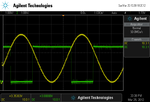
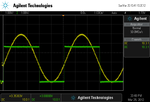
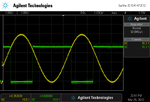
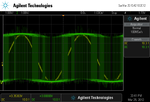
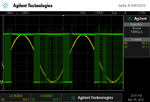
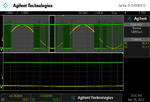
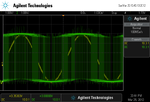
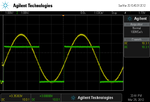
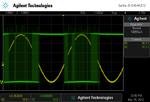
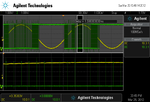
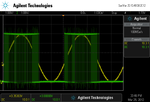
Low and high side IGBTs activated simultameously...What is not good here ?